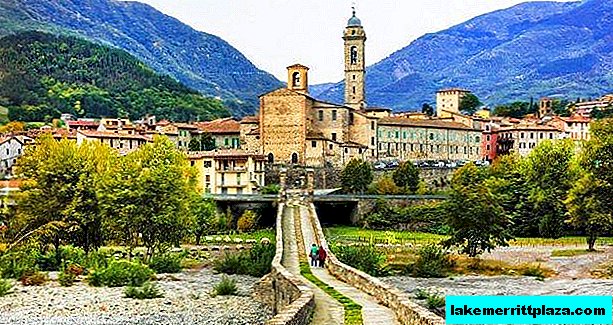Tower Bridge (Ponte delle Torri) is one of the most famous attractions of the Italian city of Spoleto. The construction, built about 800 years ago, combines the functions of a bridge and an aqueduct.
Description
The name Tower Bridge got, as you might guess, because of the towers that are located at its ends. In the north is the Albornoziana Fortress (Rocca Albornoziana). On the other hand - the tower of the old fort 12 meters high.

The height of the bridge is about 80 meters, its length is about 230 meters. 9 arches supporting the bridge are made of blocks of local limestone. There are niches in the central pylons. Previously, apparently, they were used for guard purposes. Since the 19th century, these sites began to be used as panoramic ones, and a picturesque view opens from there.
The arches of the bridge are at different distances from each other. Most likely, this is due to the features of the relief. The builders aimed to make the bridge more stable, and they succeeded, judging by how many years it has stood.
An aqueduct is located in the upper part of the Tower Bridge, a level below which allows you to cross the gorge and look at Spoleto from the side.
Story

Historians have not come to the same opinion about when exactly the Tower Bridge appeared. One version says that it was built as an aqueduct in the late 12th century. This happened after the city of Spoleto was sacked by the people of Barbarossa. Another version suggests that the bridge appeared later, in the 14th century, under the Spanish Cardinal Albornoz.
Legend has it that they built the bridge literally throughout the city. The principle "with the world on a string" was used. Thus, the bridge is a rare example of a public project for those times.
How to get there
The Tower Bridge is located 800 meters east of the city's Market Square (Piazza del Mercato). It is built through a mountain gorge along which the Tessino River flows. The construction connects the slopes of the hill of St. Elijah and the mountains of Monteluco.








